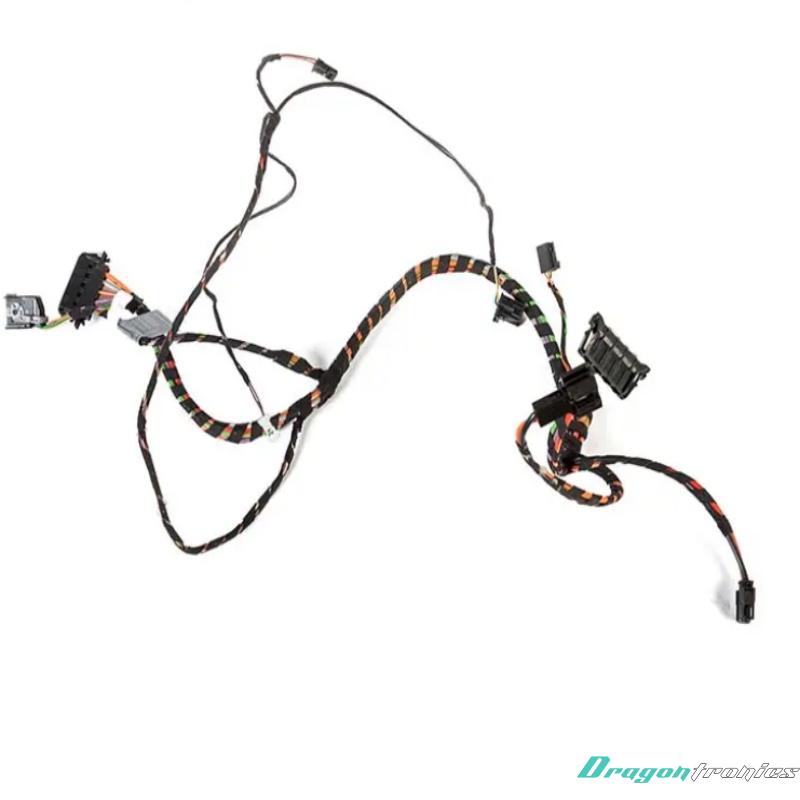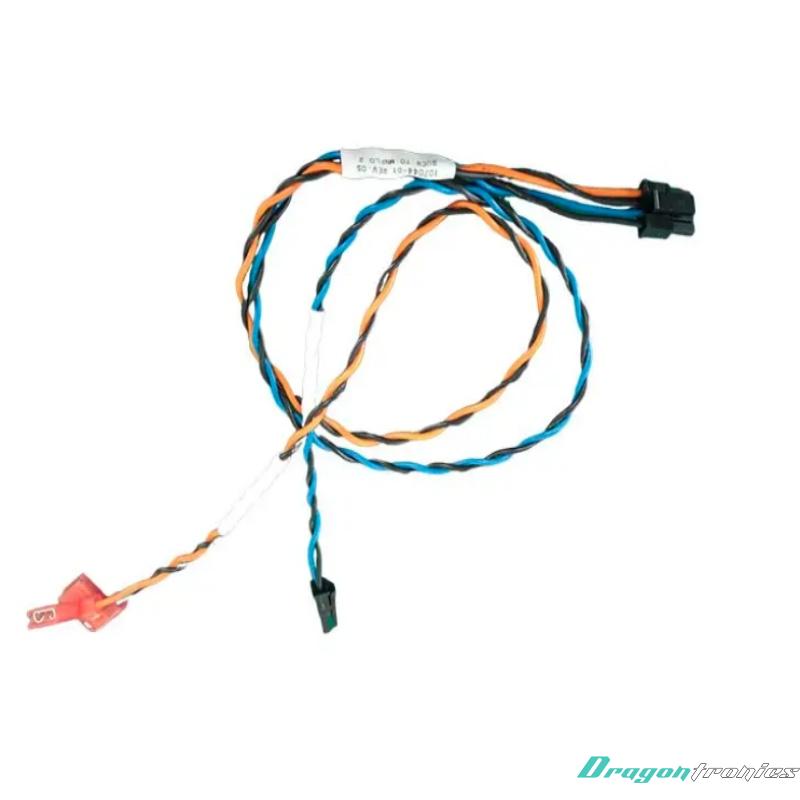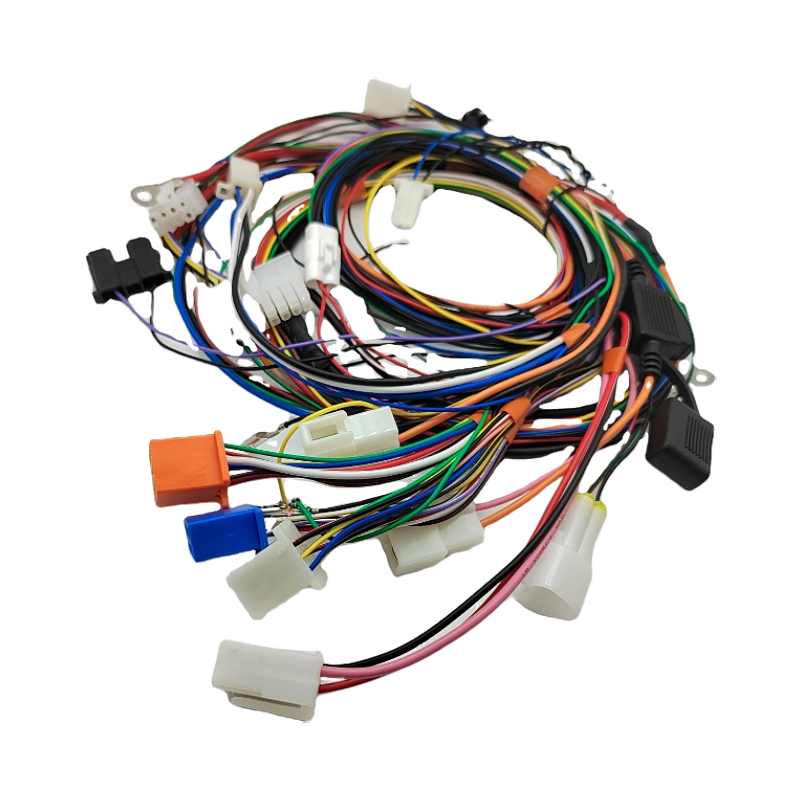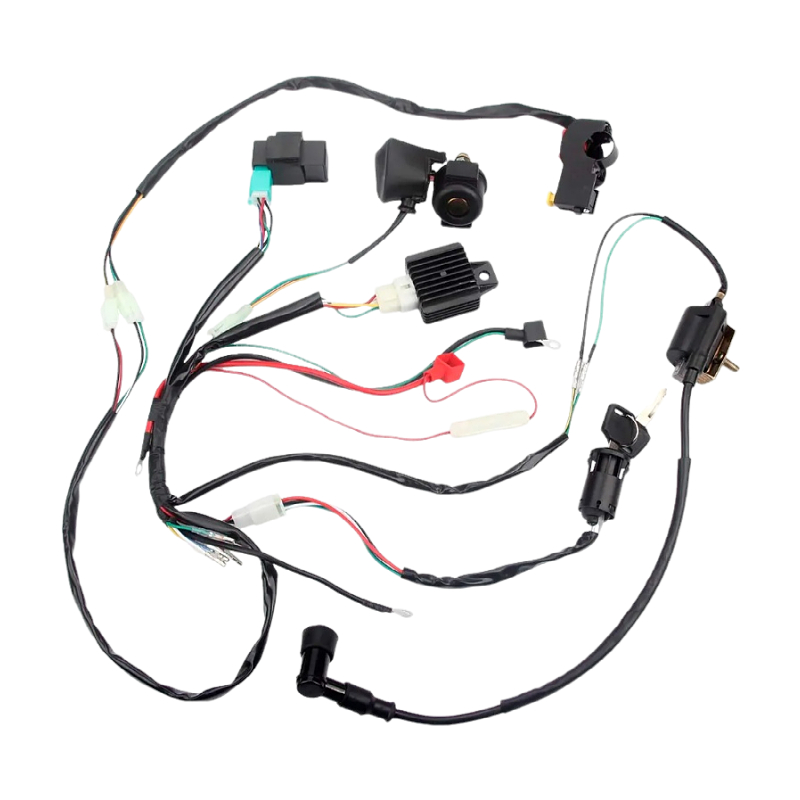Automotive Cable Assembly
Wiring harness fog light vios corolla engine wiring harness for car
- Product description: Wiring harness fog light vios corolla engine wiring harness for car
A Light Wire Harness is a specialized assembly of electrical wires, connectors, and other components designed to facilitate the safe and efficient operation of lighting systems. These wire harnesses are commonly used in various applications, including automotive lighting, commercial lighting, home lighting, and industrial lighting systems. The primary function of a light wire harness is to connect the light fixture or light bulbs to a power source (such as a battery, electrical panel, or vehicle system) while ensuring proper wiring, safety, and functionality.
Key Functions of a Light Wire Harness:
1. Power Distribution:
o The light wire harness is responsible for carrying electrical power from the power source (e.g., vehicle battery, electrical panel, or main supply) to the lighting system. This ensures that the lights receive the correct amount of power to function properly.
2. Signal Transmission:
o In addition to supplying power, the harness may also carry control signals that activate or adjust the lighting system. This is common in modern lighting systems with features like dimming, color-changing LEDs, or automated on/off switches.
3. Organizing Wiring:
o The light wire harness consolidates the multiple wires needed for lighting into a single, organized unit, which makes the installation process more straightforward and reduces the risk of tangled or exposed wires.
4. Protection and Durability:
o The wire harness provides insulation and protection for the wires from external factors like heat, moisture, abrasion, or vibration. This ensures the longevity and safety of the wiring, especially in harsh environments such as vehicles, outdoor lights, or industrial settings.
Key Components of a Light Wire Harness:
1. Wires:
o The core component of the wire harness is the wires, which are typically made from copper or aluminum for electrical conductivity. The wires carry the electrical current and are usually insulated to prevent short circuits and protect the wiring from damage.
2. Connectors:
o Connectors are used to securely join the wires to each component of the lighting system. For example, connectors can link the wire harness to light bulbs, LED modules, switches, or power sources. These connectors may be male and female terminals, spade connectors, or quick-connect fittings, depending on the system's design.
3. Insulation and Protective Sleeving:
o Insulation surrounds the individual wires, preventing electrical shorts and protecting them from external environmental factors. Additionally, some light wire harnesses may have protective sleeving made from materials like PVC, nylon, or silicone, which further shields the wiring from abrasion, heat, and UV damage.
4. Grounding Wires:
o For safety, some light wire harnesses may include grounding wires that help protect the lighting system and users from electrical shock by directing excess current safely to the ground.
5. Fuse/Relay:
o Some light wire harnesses may include a fuse or relay to protect the lights and the electrical system from overcurrent, power surges, or other electrical faults. This can prevent damage to the wiring or the lights themselves.
6. Mounting Clips or Straps:
o These components are used to secure the wire harness in place, preventing it from moving around or getting damaged due to vibration or friction.
Applications of a Light Wire Harness:
1. Automotive Lighting Systems:
o Light wire harnesses are widely used in vehicles for both exterior and interior lighting systems. They connect headlights, tail lights, brake lights, fog lights, and interior lights to the vehicle's electrical system.
o They ensure proper power delivery, and in some cases, transmit signals for features like turn signals or ambient lighting.
2. Home and Commercial Lighting:
o In residential and commercial environments, light wire harnesses are used to connect chandeliers, recessed lights, track lights, or ceiling fans to power supplies, simplifying installation and improving safety by organizing the wiring.
3. Industrial Lighting:
o Light wire harnesses are used in factories, warehouses, and other industrial environments to connect large, robust lighting systems to electrical panels. These systems often have high power demands, and the wire harness ensures that the wiring is safe, durable, and capable of handling the electrical load.
4. Outdoor and Landscape Lighting:
o For outdoor lighting systems, such as garden lights, streetlights, or floodlights, wire harnesses provide protection against the elements. The harness helps organize and protect the wiring from rain, snow, and extreme temperatures.
5. LED Lighting:
o Modern LED lighting systems use wire harnesses to connect the LED strips, modules, or panels to power sources and control systems. These harnesses are often compact and designed to handle low-voltage systems typical of LEDs.
Types of Light Wire Harnesses:
1. Single-Light Wire Harness:
o This type of harness is designed for simple, single-light installations where the wiring connects just one light to a power source. This can be found in basic fixtures or simple applications.
2. Multi-Light Wire Harness:
o A multi-light wire harness can connect multiple lights (or a network of lights) to a single power source. It’s commonly used in systems with multiple bulbs, such as chandeliers, light strips, or vehicle lighting systems.
3. High Voltage vs. Low Voltage Wire Harnesses:
o High-voltage wire harnesses are used for traditional lighting systems that operate on 120V or 220V, such as those in homes and businesses.
o Low-voltage wire harnesses are used for LED lighting or outdoor lights, typically working with voltages in the range of 12V to 24V.
4. Automotive-Specific Light Wire Harness:
o Automotive light wire harnesses are tailored to vehicle-specific lighting needs, with precise connectors and components for different lighting systems like headlights, taillights, and turn signal lights.
5. Weatherproof Light Wire Harness:
o For outdoor or industrial lighting, the harness may be designed to be weatherproof or water-resistant, featuring materials that can handle harsh environments, such as marine applications or street lighting.
Conclusion:
A Light Wire Harness is an essential component in modern electrical lighting systems, offering organized, safe, and efficient wiring solutions. By connecting lights to power sources and ensuring safe electrical operation, these harnesses are found in a wide range of applications, including automotive, home, commercial, industrial, and outdoor lighting systems. Whether for simple lighting installations or complex setups with multiple lights, the wire harness makes the system more reliable, easier to install, and longer-lasting.
Categories
Latest News
Contact Us
Contact: Fiona Wu
Phone: 86 - 173 28414 818
Tel:
Add: 20, Changtian Road, Hengli, Dongguan, Guangdong, 523852, China





 Lankecms
Lankecms lankecms
lankecms
 Lankecms
Lankecms